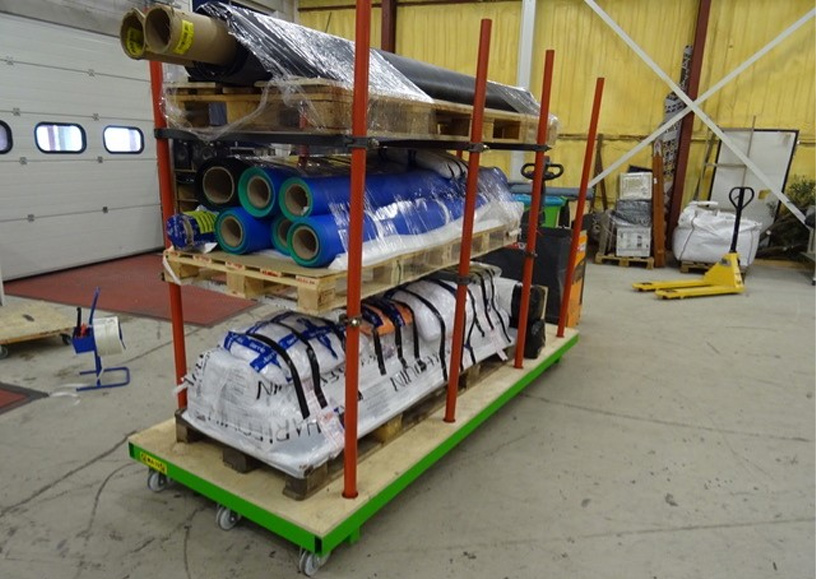
Fine arts and clean transport
There is a lot of transport involved in putting together an opera or ballet production. All the sets and costumes need to be transported to and from the venue. Ton Kuijper, Head of Purchasing & Logistics at the Production Workshop, tells us more about how he is trying to reduce the climate footprint of the transport movements of Dutch National Opera & Ballet (DNO&B).
Ton Kuijper is very much aware of climate issues. Because of this, he is firmly committed to DNO&B’s ambition to move towards sustainable transport. It is thanks to him – and Rolf Hauser, Head of the Production Workshop – that the workshop has a truck that runs on biodiesel. Its emissions are 90% lower than that of a regular truck. Kuijper: ‘We have our own biodiesel tank here, because the fuel isn’t readily available.’
‘If the price of fossil transport goes up, people will think twice about it’
For smaller orders, the Production Workshop has an electric van that is green electricity-powered. Kuijper: ‘Our electric van is mostly solar-powered with self-generated solar energy from our roof.’
No sustainable transport companies
The truck is for local use only: from the Production Workshop to the theatre at Waterlooplein and to the warehouse in Swifterbant, about 65 kilometres away. Kuijper: ‘If we need multiple trailers, we call in a transport company. Unfortunately, sustainable transport companies are still few and far between. I’ve asked our current transport partner before when they expect to green their fleet, but they tell me that we’re their only client who wants them to. Isn’t that surprising?’
Kuijper hopes that the Dutch government will start to impose requirements soon. ‘If the price of fossil transport goes up, people will think twice about it.’
To limit fossil transports, Kuijper uses them as efficiently as possible. ‘We try to combine transports as much as we can, both when we receive shipments at the Production Workshop and when we dispatch sets and materials.’

Kuijper and Hauser have developed their own transportation system with connectible scenery cars. A standard sea container will fit eight of these cars. All cars have a QR code to allow digital registration. Kuijper: ‘Because the cars are on wheels, we can now load and unload in 15 minutes. That saves us from having to carry everything, but it also keeps the sets in better shape because they don’t have to be moved as much. We don’t remove the car until a set is on stage.’
Kuijper’s system is so efficient that other theatres have also started using it.
‘We use a model that helps us calculate the carbon emissions of our transport movements’
Productions are occasionally sent on loan to other opera houses. Kuijper tries to streamline those transports as well. ‘We’ve recently started using a model that allows us to calculate the carbon footprint of a transport. We occasionally run into difficult questions because of this. What to do if the most sustainable option is also the most expensive? What price do we put on sustainability?’
Too early for nitrogen
If Kuijper had his way, the Production Workshop would have a nitrogen-powered truck, but ‘it’s four times as expensive as a regular one. Obviously, our core business is creating art and we can’t create as much of it if we spend our money on overpriced trucks.’ Also, the City of Amsterdam does not require vehicles to be emissions-free until after 2030, so DNO&B qualifies as a forerunner with its low-emissions fleet.
But Kuijper still tries to educate others about what is possible in the way of sustainability measures. ‘There are so many technical options nowadays, but the fossil lobby is very strong. Did you know that the first electric car was produced as early as in 1888? 1888! Can you believe it?’
That goes to show that, to make a dream come true, you not only have to overcome a host of practicalities, but you also have to fight the system.
Text: Anne Havelaar



